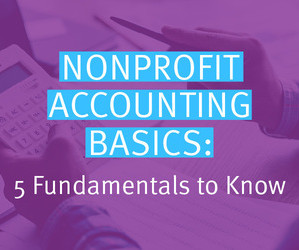How to create your new nonprofit’s first budget
Get Fully Funded
MARCH 20, 2023
When you’re just getting started, it’s critical that one of your first steps is to create your nonprofit’s first budget to help you manage both your organization and your finances as it grows. Use accounting software to help you manage your finances.


















Let's personalize your content